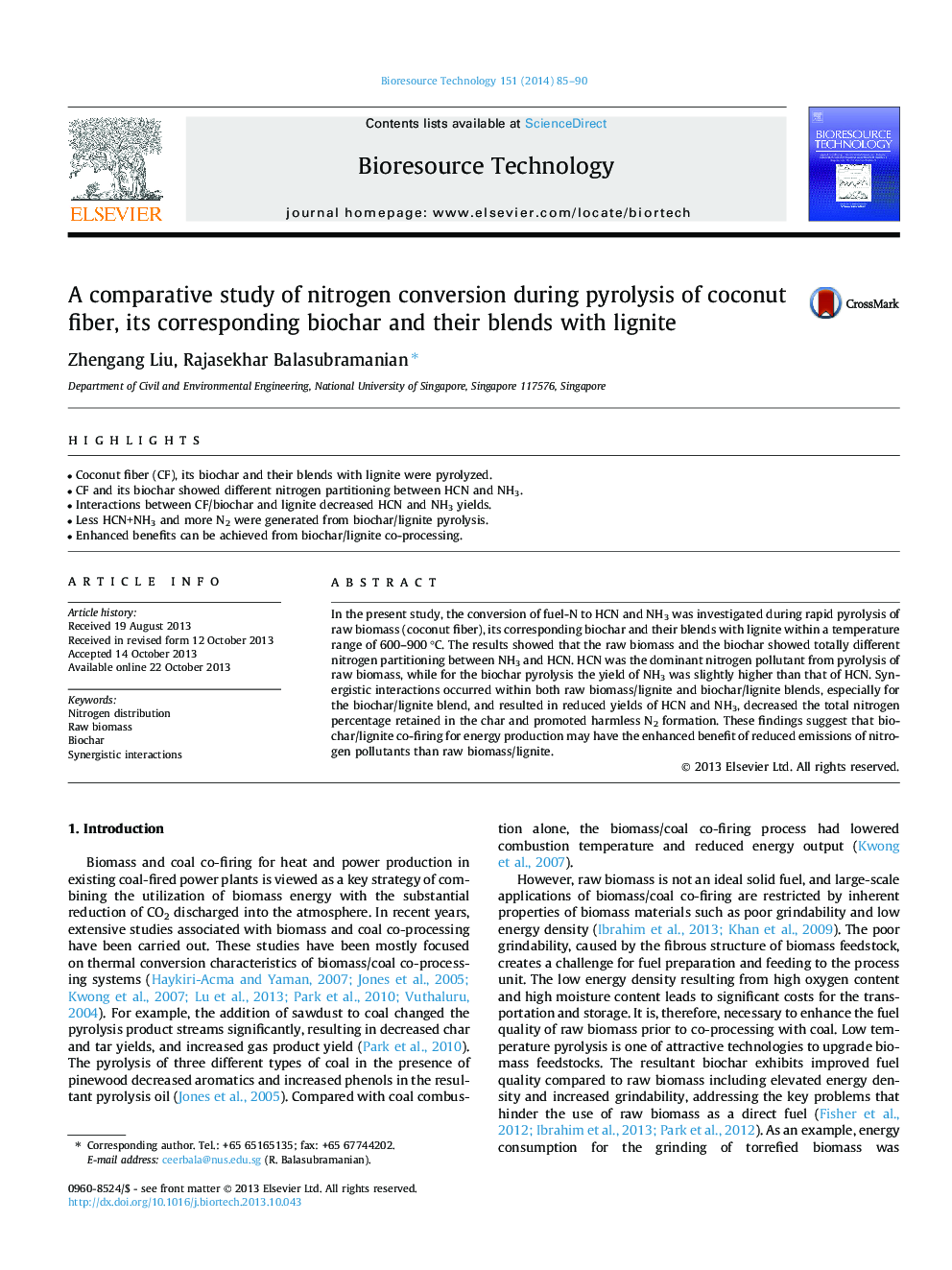| Article ID | Journal | Published Year | Pages | File Type |
|---|---|---|---|---|
| 7079648 | Bioresource Technology | 2014 | 6 Pages |
Abstract
In the present study, the conversion of fuel-N to HCN and NH3 was investigated during rapid pyrolysis of raw biomass (coconut fiber), its corresponding biochar and their blends with lignite within a temperature range of 600-900 °C. The results showed that the raw biomass and the biochar showed totally different nitrogen partitioning between NH3 and HCN. HCN was the dominant nitrogen pollutant from pyrolysis of raw biomass, while for the biochar pyrolysis the yield of NH3 was slightly higher than that of HCN. Synergistic interactions occurred within both raw biomass/lignite and biochar/lignite blends, especially for the biochar/lignite blend, and resulted in reduced yields of HCN and NH3, decreased the total nitrogen percentage retained in the char and promoted harmless N2 formation. These findings suggest that biochar/lignite co-firing for energy production may have the enhanced benefit of reduced emissions of nitrogen pollutants than raw biomass/lignite.
Related Topics
Physical Sciences and Engineering
Chemical Engineering
Process Chemistry and Technology
Authors
Zhengang Liu, Rajasekhar Balasubramanian,
